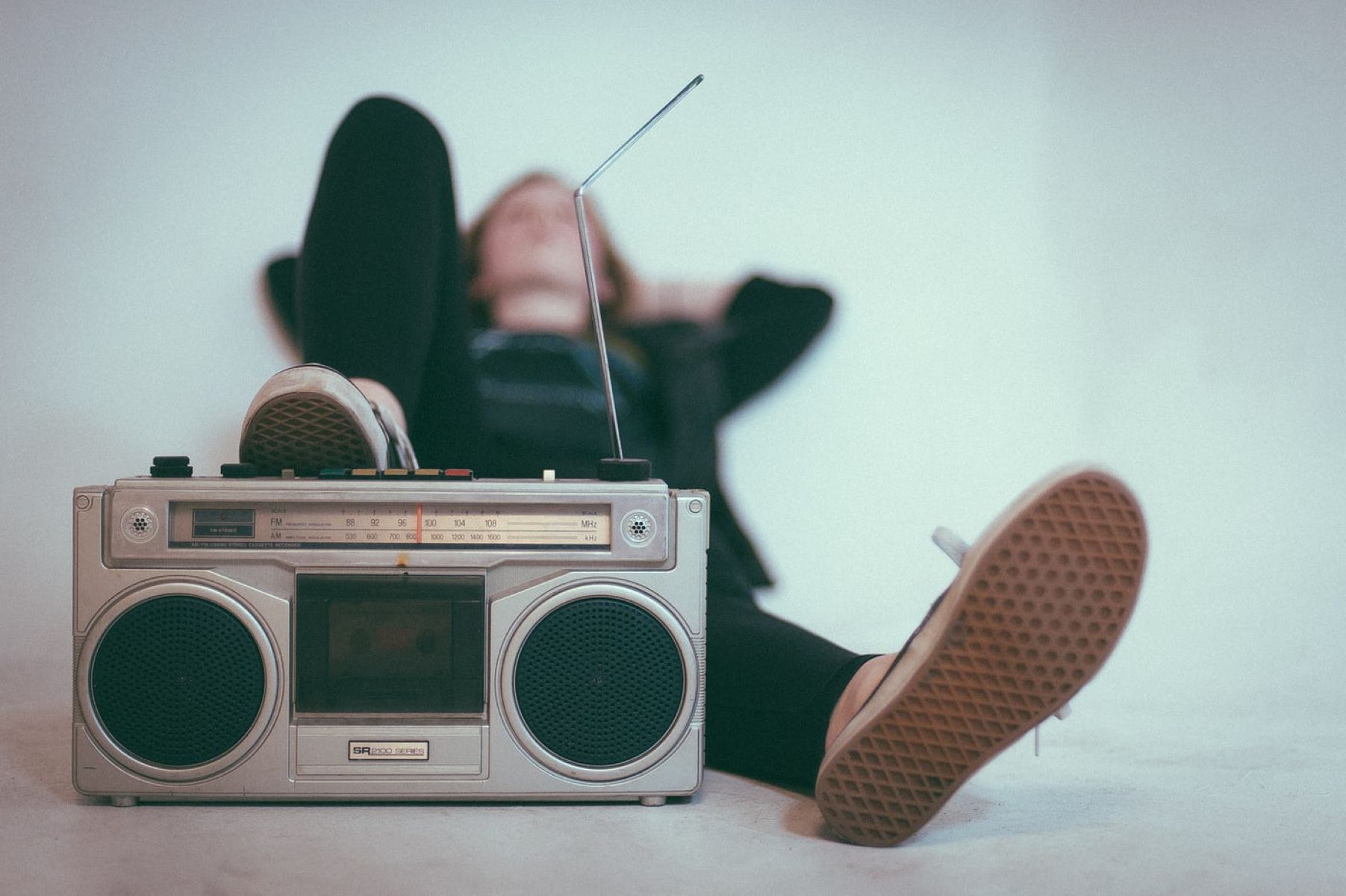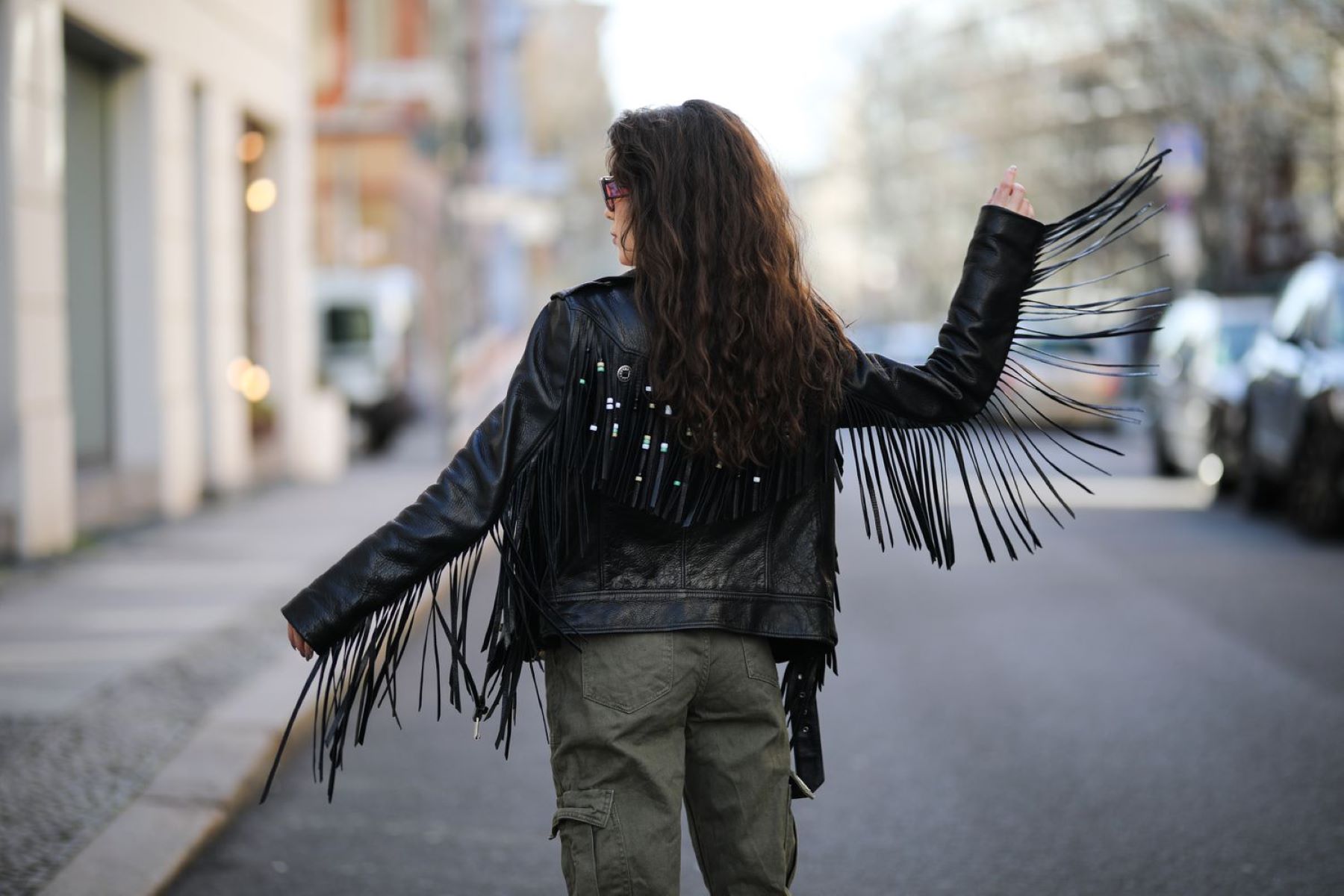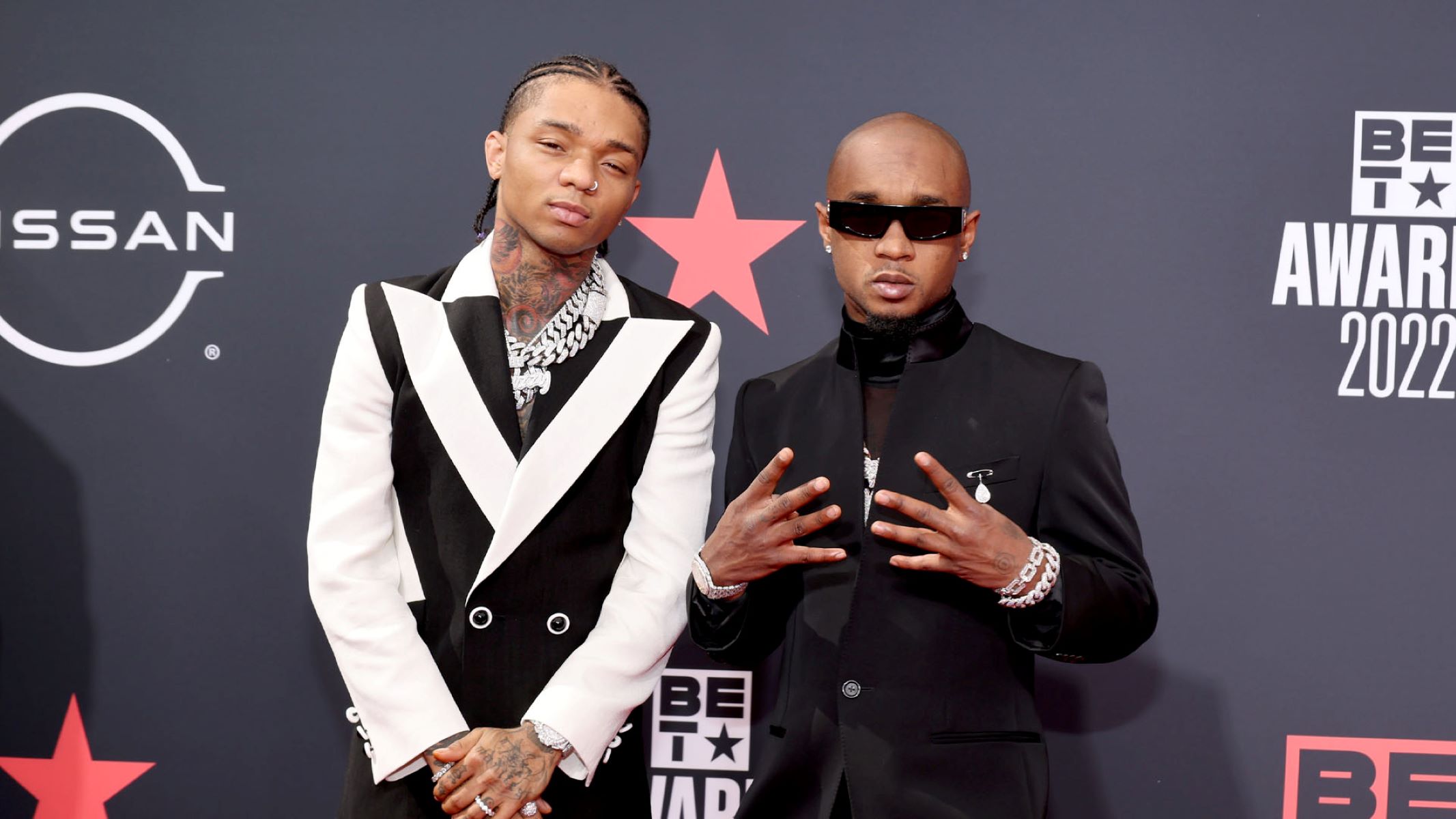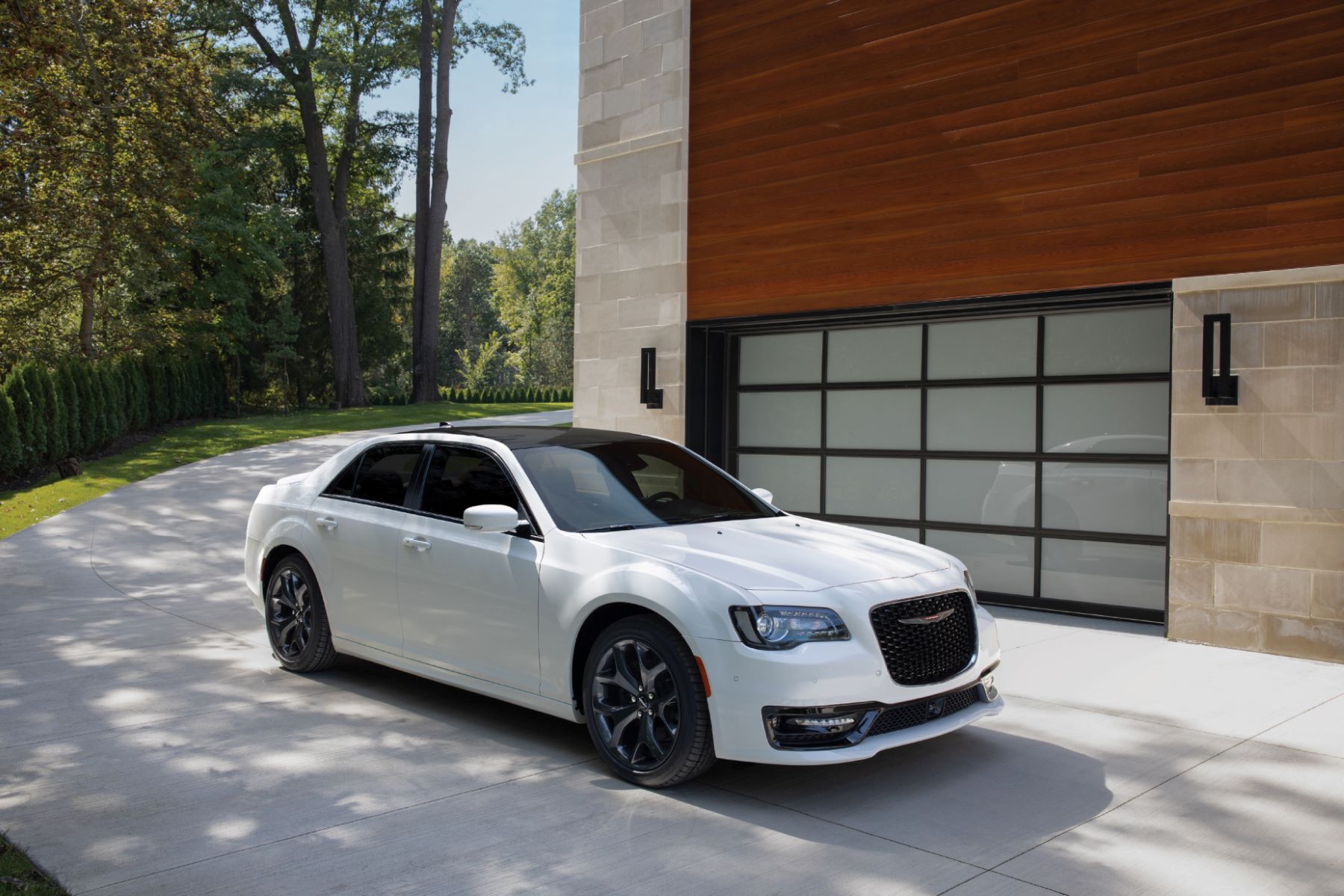Home>Arts and Culture>10 Strange Things People Did In The 80s


Arts and Culture
10 Strange Things People Did In The 80s
Published: January 17, 2024
Explore the quirks and trends of 80s arts and culture with this intriguing list of 10 strange things people did during this vibrant era. Uncover the unique and unconventional aspects of this influential period.
(Many of the links in this article redirect to a specific reviewed product. Your purchase of these products through affiliate links helps to generate commission for Regretless.com, at no extra cost. Learn more)
Table of Contents
Introduction
The 1980s was a decade of bold fashion, iconic music, and unforgettable trends. It was a time when people embraced self-expression and individuality, leading to a plethora of unique and sometimes bizarre fads. From larger-than-life hairstyles to quirky fashion statements, the 80s witnessed a cultural explosion that left a lasting impact on society.
As we delve into this nostalgic journey, we will explore ten strange things that people did in the 80s. Each of these trends encapsulates the spirit of the era, reflecting the vibrant and eclectic nature of 80s culture. Join me as we unravel the fascinating, often amusing, and occasionally perplexing aspects of this remarkable decade. Let's embark on a captivating exploration of the quirks and eccentricities that defined the 1980s.
Big Hair
The 1980s were synonymous with big hair, a trend that took the concept of volume to unprecedented heights. Both men and women enthusiastically embraced this fashion statement, resulting in gravity-defying hairstyles that defied conventional norms. The era witnessed an explosion of hair products, from volumizing mousses to ultra-hold hairsprays, as individuals sought to achieve the coveted larger-than-life look.
For women, big hair often entailed teasing and backcombing to create towering bouffant styles or cascading curls that exuded glamour and extravagance. The iconic "mall bangs," characterized by their towering height and sculpted structure, became a hallmark of 80s fashion. These gravity-defying hairstyles were often complemented by vibrant hair accessories, such as oversized bows and scrunchies, adding an extra layer of flamboyance to the overall aesthetic.
Men also enthusiastically participated in the big hair craze, with the rise of the infamous mullet hairstyle. The mullet, characterized by its short front and sides juxtaposed with a long, flowing back, became a symbol of rebellion and nonconformity. It was a bold statement that encapsulated the spirit of the 80s, exuding an air of confidence and individuality.
The music and entertainment industry played a significant role in popularizing big hair, with rock stars and pop icons sporting elaborate and gravity-defying hairstyles. Bands such as Bon Jovi and Def Leppard became synonymous with their members' extravagant hairdos, which became emblematic of the era's larger-than-life ethos.
The prevalence of big hair in the 80s was a testament to the era's unapologetic embrace of excess and flamboyance. It represented a form of self-expression and rebellion against traditional norms, allowing individuals to showcase their creativity and personality through their larger-than-life hairstyles. While the trend may appear eccentric in retrospect, it remains an indelible symbol of the 1980s, encapsulating the era's exuberance and unbridled enthusiasm for self-expression.
Shoulder Pads
Shoulder pads emerged as a defining fashion trend in the 1980s, transforming the silhouette of both men's and women's clothing. This bold sartorial statement, characterized by exaggerated shoulder proportions, epitomized the era's penchant for power dressing and assertive fashion choices. The widespread adoption of shoulder pads was a reflection of the evolving societal dynamics, particularly the increasing presence of women in the workforce and their desire to exude confidence and authority through their attire.
In women's fashion, shoulder pads became a prominent feature in blazers, jackets, and even dresses, imparting a strong and structured appearance. The exaggerated shoulder line created a bold and angular silhouette, symbolizing empowerment and professionalism. This trend was epitomized by influential figures such as Joan Collins in "Dynasty" and Grace Jones, who embraced shoulder pads as a symbol of strength and sophistication.
The fashion industry played a pivotal role in popularizing shoulder pads, with renowned designers incorporating them into their collections. Runways showcased an array of power suits adorned with prominent shoulder pads, redefining traditional notions of femininity and elegance. The trend extended beyond formal attire, permeating casual wear and even evening gowns, underscoring its pervasive influence on 80s fashion.
Men also embraced the shoulder pad trend, albeit in a more subtle manner. Suits tailored with structured shoulders became a staple in men's fashion, conveying authority and confidence. This stylistic choice reflected a shift towards a more assertive and commanding aesthetic, aligning with the era's emphasis on bold self-expression.
The prominence of shoulder pads in 80s fashion was emblematic of the era's transformative cultural landscape, where individuals sought to make a statement through their attire. The trend represented a departure from traditional gender norms, allowing both men and women to embody a sense of power and authority through their clothing. While the exaggerated proportions may appear unconventional by today's standards, shoulder pads remain an enduring symbol of the 1980s, encapsulating the era's bold and unapologetic approach to fashion.
Mixtapes
The 1980s marked the golden era of mixtapes, a phenomenon that revolutionized the way people curated and shared their favorite music. Mixtapes were more than just compilations of songs; they were personalized expressions of emotion, creativity, and nostalgia. This trend transcended mere entertainment, serving as a tangible manifestation of personal connections and emotional resonance.
Creating a mixtape was a labor of love, requiring careful selection and arrangement of songs to convey a specific mood or message. Whether it was a declaration of affection, a reflection of personal experiences, or a soundtrack for a road trip, each mixtape was a meticulously crafted reflection of the creator's sentiments. The process of recording songs from vinyl records, cassette tapes, or radio broadcasts demanded precision and patience, as individuals meticulously curated each track to achieve a seamless flow and thematic coherence.
Mixtapes also served as a means of cultural exchange and connection. Sharing a mixtape with a friend or romantic interest was a deeply intimate gesture, allowing individuals to convey their emotions and musical preferences in a tangible and meaningful way. The act of gifting a mixtape was a profound expression of thoughtfulness and understanding, as the creator invested time and emotional energy into crafting a personalized auditory experience for the recipient.
The significance of mixtapes extended beyond personal relationships, shaping the broader cultural landscape of the 1980s. They became a medium for discovering new music, as individuals exchanged mixtapes to introduce each other to diverse genres and artists. This communal aspect of mixtapes fostered a sense of interconnectedness and shared musical exploration, transcending geographical boundaries and cultural barriers.
The advent of mixtapes also empowered individuals to become amateur DJs, experimenting with track sequencing, fade-ins, and fade-outs to create a seamless listening experience. This hands-on approach to music curation allowed people to develop a deeper appreciation for the art of crafting cohesive and emotionally evocative playlists.
The legacy of mixtapes endures as a testament to the profound impact of music on personal connections and emotional expression. While contemporary digital playlists have largely supplanted the analog charm of mixtapes, the sentiment and nostalgia associated with these tangible musical compilations continue to resonate with those who experienced the magic of mixtapes in the 1980s.
Walkman
The introduction of the Sony Walkman in the late 1970s revolutionized the way people experienced music and fundamentally transformed the cultural landscape of the 1980s. This portable audio device, which allowed individuals to carry their music wherever they went, represented a paradigm shift in personal entertainment and mobility.
The Walkman, initially released as the "Soundabout" in the United States, embodied the spirit of freedom and individuality that defined the 1980s. Its compact size and lightweight design empowered users to break free from the confines of traditional home stereo systems and embrace a newfound sense of mobility. Whether commuting to work, exercising, or simply strolling through the city streets, individuals could immerse themselves in their favorite music without being tethered to a stationary audio setup.
The impact of the Walkman extended beyond its technological innovation; it engendered a cultural phenomenon that transcended generational boundaries. The device became an iconic accessory, symbolizing the fusion of music and personal autonomy. Its sleek and futuristic aesthetic appealed to a diverse demographic, from avid music enthusiasts to casual listeners seeking a soundtrack for their daily activities.
The Walkman also catalyzed the concept of music as a personal and intimate experience. With the ability to curate custom mixtapes or listen to pre-recorded cassettes, users could tailor their musical journey to suit their mood and preferences. This personalized approach to music consumption fostered a profound emotional connection, as individuals associated specific songs and albums with their unique experiences and memories.
Furthermore, the Walkman contributed to the decentralization of music consumption, marking a departure from communal listening experiences. While traditional stereo systems had emphasized shared musical enjoyment within households or social gatherings, the Walkman empowered individuals to create their private sonic sanctuaries. This shift in listening behavior reflected the era's emphasis on individualism and self-expression, as people curated their auditory environments according to their personal tastes and inclinations.
The Walkman's enduring legacy is evident in its lasting impact on subsequent generations of portable music devices. Its influence reverberates in modern-day smartphones and digital music players, which continue to embody the principles of mobility, personalization, and on-the-go entertainment that the Walkman pioneered.
The Walkman stands as a testament to the transformative power of innovation, as it not only revolutionized the way people experienced music but also left an indelible mark on the cultural fabric of the 1980s. Its legacy endures as a symbol of technological ingenuity and the enduring allure of music as a deeply personal and immersive art form.
Read more: Top 10 Ultimate 80’s Dance Anthems!
Rubik's Cube
The Rubik's Cube, an iconic 3D combination puzzle, captivated the world in the 1980s, becoming a symbol of intellectual challenge and visual dexterity. Conceived by Hungarian architect and professor Ernő Rubik in 1974, the Rubik's Cube gained widespread popularity in the 1980s, captivating enthusiasts with its deceptively simple yet fiendishly complex design.
The Rubik's Cube comprises a 3x3x3 arrangement of smaller cubes, each adorned with one of six colors. The objective is to twist and turn the cube's layers to achieve a uniform color configuration on each face, a task that presents a staggering number of possible combinations. With an astronomical 43 quintillion potential arrangements, solving the Rubik's Cube demands a combination of logical reasoning, spatial awareness, and strategic problem-solving skills.
Beyond its status as a perplexing puzzle, the Rubik's Cube transcended mere entertainment, serving as a cultural phenomenon that permeated various facets of society. It became a ubiquitous presence in popular culture, appearing in films, television shows, and literature, symbolizing the allure of intellectual prowess and the triumph of perseverance.
The appeal of the Rubik's Cube extended beyond its enigmatic design; it represented a multifaceted challenge that engaged individuals across age groups and backgrounds. Its allure as a mental exercise and a test of patience spurred a global craze, with enthusiasts devoting countless hours to unraveling its intricate conundrum.
The 1980s witnessed a surge in Rubik's Cube tournaments and competitions, where aficionados showcased their speed-solving abilities and strategic methodologies. The emergence of speedcubing as a competitive pursuit underscored the widespread fascination with the Rubik's Cube, elevating it from a mere pastime to a bona fide discipline that demanded precision, agility, and unwavering focus.
The enduring legacy of the Rubik's Cube is evident in its continued relevance and influence in contemporary culture. It remains a timeless emblem of intellectual fortitude and tenacity, inspiring new generations to embrace the challenge of unraveling its perplexing arrangement of colors. The Rubik's Cube's enduring allure lies in its ability to transcend the boundaries of language and culture, captivating minds and igniting a passion for intellectual exploration.
The Rubik's Cube's enduring allure lies in its ability to transcend the boundaries of language and culture, captivating minds and igniting a passion for intellectual exploration. Its legacy endures as a testament to the universal appeal of intellectual challenges and the enduring allure of conquering the seemingly insurmountable.
Pac-Man Fever
The 1980s witnessed a cultural phenomenon that swept across arcades, living rooms, and popular media: the advent of "Pac-Man Fever." This infectious craze, inspired by the iconic arcade game "Pac-Man," captivated the imaginations of millions and left an indelible mark on popular culture.
"Pac-Man," created by Japanese game designer Toru Iwatani and released by Namco in 1980, introduced players to a whimsical and addictive world populated by colorful ghosts and a voracious, pizza-shaped protagonist. The game's premise was deceptively simple: guide Pac-Man through a maze, consuming dots while evading the pursuing ghosts. The game's intuitive gameplay, coupled with its endearing characters and vibrant visuals, resonated with players of all ages, transcending cultural and linguistic barriers.
The impact of "Pac-Man" extended far beyond the confines of arcades, permeating various facets of 1980s culture. The game's widespread popularity spawned a plethora of merchandise, from t-shirts and lunchboxes to an eponymous hit song, "Pac-Man Fever," by Buckner & Garcia. The infectious melody of the song, coupled with its whimsical lyrics celebrating the game's characters and gameplay, became an anthem for enthusiasts caught in the grip of "Pac-Man Fever."
The cultural impact of "Pac-Man" was not limited to entertainment; it also catalyzed a shift in societal perceptions of video games. "Pac-Man" played a pivotal role in broadening the appeal of gaming beyond traditional demographics, attracting a diverse audience that included both casual players and dedicated enthusiasts. Its universal appeal as a family-friendly pastime contributed to the normalization of video game culture, paving the way for the medium's enduring popularity and mainstream acceptance.
Moreover, "Pac-Man" became a symbol of technological innovation and creative ingenuity, showcasing the potential of video games as immersive and interactive experiences. The game's success inspired a wave of arcade titles and home console releases, fueling a burgeoning industry that would eventually evolve into the multi-billion-dollar gaming landscape we know today.
The legacy of "Pac-Man" endures as a testament to the enduring appeal of timeless gameplay and endearing characters. Its cultural impact transcends generational boundaries, resonating with contemporary audiences and serving as a touchstone for the evolution of gaming as a ubiquitous and influential form of entertainment. As we reflect on the phenomenon of "Pac-Man Fever," we are reminded of the game's profound influence on popular culture and its enduring status as a beloved and iconic emblem of the 1980s.
Aerobics Craze
The 1980s witnessed a fitness revolution that swept across the cultural landscape, giving rise to the iconic phenomenon known as the "Aerobics Craze." This sweeping trend transcended traditional notions of exercise, transforming physical fitness into a vibrant and exhilarating pursuit that captured the collective imagination of millions.
At the heart of the Aerobics Craze was the emergence of aerobic exercise as a mainstream phenomenon. Aerobics, characterized by dynamic and rhythmic movements set to energetic music, offered a compelling alternative to conventional workout routines. The fusion of cardiovascular conditioning, choreographed routines, and pulsating beats created an immersive and invigorating fitness experience that resonated with individuals seeking a dynamic approach to physical activity.
The appeal of aerobics extended far beyond its physical benefits; it became a cultural phenomenon that permeated various facets of 1980s society. The trend was epitomized by high-energy group classes led by charismatic instructors, fostering a sense of camaraderie and shared motivation among participants. Aerobics classes became social gatherings infused with infectious energy, where individuals of all ages and fitness levels converged to engage in a collective celebration of movement and vitality.
The influence of the Aerobics Craze extended beyond the confines of fitness studios, permeating popular media and shaping fashion trends. The vibrant and form-fitting workout attire adorned with neon colors and bold patterns became emblematic of the era's fitness culture, reflecting the exuberance and dynamism associated with aerobic exercise. The visual aesthetic of aerobics attire mirrored the pulsating energy of the workouts, underscoring the seamless integration of fashion and physical activity.
Moreover, the Aerobics Craze catalyzed a broader cultural shift towards prioritizing physical well-being and holistic health. The emphasis on aerobic exercise as a holistic approach to fitness underscored the interconnectedness of physical, mental, and emotional wellness, fostering a comprehensive understanding of health and vitality. The trend inspired individuals to embrace a more active lifestyle, promoting the notion that fitness could be both enjoyable and empowering.
The enduring legacy of the Aerobics Craze is evident in its lasting impact on contemporary fitness culture. The principles of dynamic movement, rhythmic synchronization, and communal engagement continue to permeate modern fitness practices, underscoring the enduring influence of the 1980s aerobic revolution. As we reflect on the Aerobics Craze, we are reminded of its transformative power in redefining the perception of exercise and fostering a vibrant culture of physical vitality and well-being.
Cabbage Patch Kids
The 1980s witnessed the unprecedented emergence of a cultural phenomenon that captured the hearts and imaginations of children and adults alike: the Cabbage Patch Kids. Conceived by American artist Xavier Roberts, these distinctive and endearing dolls transcended the traditional toy market, evolving into a global sensation that left an indelible mark on popular culture.
The allure of Cabbage Patch Kids lay in their unique and captivating charm. Each doll was meticulously crafted with individualized features, from rosy cheeks to signature dimples, imbuing them with a sense of personality and individuality. The adoption process added an intriguing layer to the dolls' appeal, as each Cabbage Patch Kid came with a unique name and adoption certificate, fostering a sense of emotional connection and responsibility among their young caretakers.
The cultural impact of Cabbage Patch Kids extended beyond their status as beloved playthings; they became symbols of companionship, nurturing, and imaginative play. The dolls inspired a fervent sense of devotion among their young owners, fostering a profound emotional bond that transcended the realm of conventional toys. Their endearing qualities and distinctive aesthetic made them coveted companions, igniting the imaginations of children and eliciting a sense of caretaking and empathy.
The widespread popularity of Cabbage Patch Kids sparked a global craze, leading to frenzied demand and fervent collector enthusiasm. Their universal appeal transcended geographical and cultural boundaries, captivating audiences around the world and permeating various facets of popular media. The dolls became cultural icons, featuring in television commercials, animated specials, and even inspiring a chart-topping song, "Cabbage Patch Kids" by the Little Hippies.
Furthermore, the Cabbage Patch Kids phenomenon catalyzed a broader cultural shift, emphasizing the significance of nurturing and compassion in children's play. The dolls encouraged imaginative role-playing, nurturing instincts, and social interaction, fostering a holistic approach to childhood development. Their enduring popularity underscored the timeless allure of traditional toys that prioritize creativity, empathy, and emotional engagement.
The legacy of Cabbage Patch Kids endures as a testament to the enduring appeal of timeless playthings that transcend mere entertainment, fostering emotional connections and imaginative exploration. As we reflect on the enchanting allure of Cabbage Patch Kids, we are reminded of their profound impact on childhood culture and their enduring status as cherished emblems of the 1980s.
Fanny Packs
The 1980s witnessed the meteoric rise of a fashion accessory that would become emblematic of the era's eclectic style and practical convenience: the fanny pack. This unassuming yet versatile pouch, designed to be worn around the waist, transcended its utilitarian origins to become a cultural phenomenon that left an indelible mark on 1980s fashion.
Fanny packs, also known as waist bags or belt bags, represented a departure from traditional handbags and backpacks, offering a hands-free and compact solution for carrying essentials. The functional design of the fanny pack made it an ideal accessory for individuals on the go, allowing them to stow their keys, wallet, and other necessities securely within arm's reach. This practicality resonated with a generation that embraced an active and mobile lifestyle, positioning the fanny pack as an indispensable companion for urban dwellers, travelers, and outdoor enthusiasts.
Beyond its utilitarian appeal, the fanny pack became a sartorial statement that reflected the era's penchant for bold and unconventional fashion choices. The vibrant and eye-catching designs of fanny packs, often adorned with neon colors, geometric patterns, and durable nylon fabrics, mirrored the exuberance and dynamism of 1980s street style. The accessory's ability to seamlessly integrate into casual, sporty, and even formal ensembles underscored its versatility and adaptability, transcending traditional fashion boundaries.
The widespread adoption of fanny packs by celebrities, athletes, and trendsetters further propelled their cultural prominence, cementing their status as a must-have accessory. From music icons sporting fanny packs on stage to athletes donning them during training sessions, the accessory became synonymous with an active and fashion-forward lifestyle. Its ubiquitous presence in popular media and entertainment solidified its place as a defining emblem of 1980s fashion.
Moreover, the fanny pack's enduring legacy is evident in its resurgence as a contemporary fashion staple, transcending generational boundaries and evolving to suit modern style sensibilities. Designers and fashion houses have reimagined the fanny pack, infusing it with luxury materials, sleek silhouettes, and innovative features, thereby ensuring its relevance in today's fashion landscape.
As we reflect on the enduring allure of fanny packs, we are reminded of their multifaceted significance as both a practical accessory and a cultural touchstone. The fanny pack's journey from functional utility to fashion icon encapsulates the spirit of the 1980s, where practicality intersected with bold self-expression, resulting in an enduring emblem of style and functionality.
Mullets
The 1980s bore witness to the meteoric rise of a hairstyle that would become synonymous with the era's audacious fashion trends: the mullet. Defined by its distinctive juxtaposition of short hair at the front and sides with long, flowing locks at the back, the mullet encapsulated the spirit of rebellion and nonconformity that permeated 1980s culture.
The mullet's unconventional aesthetic defied traditional hairstyling norms, embodying a bold and unapologetic approach to self-expression. This distinctive hairstyle became a symbol of individuality and defiance, reflecting a rejection of societal conventions and a celebration of personal freedom. Embraced by both men and women, the mullet transcended gender boundaries, embodying a spirit of androgyny and non-binary expression that challenged traditional notions of beauty and grooming.
Beyond its visual impact, the mullet became emblematic of the era's music and entertainment scene. Iconic rock stars and pop culture icons, from David Bowie to Billy Ray Cyrus, sported flamboyant mullets that became synonymous with their artistic personas. The hairstyle exuded an air of rebellious charisma, aligning with the era's emphasis on bold self-expression and unapologetic individualism.
The mullet's enduring legacy is evident in its continued influence on contemporary fashion and pop culture. While its popularity may have waned in subsequent decades, the mullet has experienced a resurgence in recent years, with fashion enthusiasts and trendsetters reimagining the hairstyle with modern twists and variations. The mullet's enduring appeal lies in its ability to defy traditional beauty standards and challenge conventional notions of hairstyling, serving as a symbol of unbridled creativity and personal expression.
As we reflect on the enduring allure of the mullet, we are reminded of its profound impact on 1980s culture, where it stood as a defiant emblem of individualism and nonconformity. The mullet's journey from a rebellious hairstyle to a cultural touchstone underscores its enduring legacy as a symbol of audacious self-expression and unapologetic individuality.













